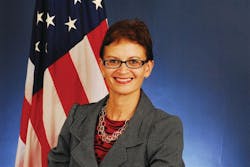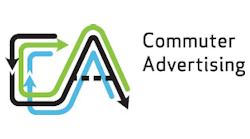Toronto, On.
Michael Roschlau
President and CEO, Canadian Urban Transit Association
In the public transit industry – be it Canada or the United States – traditional approaches to funding and financing no longer cut it. This can be seen in the difficulties faced by federal reauthorization efforts in the United States, and by increasingly cash-strapped municipal and provincial governments in Canada. Indeed, Canadian municipalities regularly point out that, while building more than one-half of the country’s core infrastructure, they collect just eight cents of every tax dollar paid in Canada.
Ensuring the financial health of transit is one of six themes in Transit Vision 2040, the Canadian industry’s blueprint for the future. That Vision identifies the need for sustainable performance-based capital and operating funding mechanisms from all three orders of government, efficiency gains and alternative funding and transportation pricing options. And dozens of municipal councils across the country have passed resolutions endorsing Transit Vision 2040 and integrating its themes into their municipal plans.
As the funding issue resonates equally for transit systems across Canada and the United States, CUTA and its U.S. counterpart, the American Public Transportation Association (APTA), joined forces earlier this year to organize a two-day International Practicum on Transit Funding and Financing in Montreal.
One of the primary answers is clearly a stronger partnership with provincial, state and federal governments, but in search of more innovative solutions, the practicum brought together leading experts from around the world to learn from experiences elsewhere that could have relevance here at home. These examples and discussions are particularly pertinent as transit systems large and small search for new revenue tools and investment strategies.
In that light, experts from Asia, Europe, Australia and North America shared experience with each other on issues such as land value capture, innovative fare policies, road pricing, taxation measures, public private partnerships and citizen referenda. A rich exchange of challenges and solutions created an inspirational environment for considering the potential for new ideas. The program was developed specifically with transferability and North American application in mind, and transit systems from California to Nova Scotia, from Florida to British Columbia, came away motivated to break through the limits of traditional approaches to transit funding.
While there is no silver bullet, a combination of traditional and innovative funding and financing mechanisms holds the key for a sustainable future. Although each jurisdiction has its own unique conditions and priorities, there is much we can learn from each other, and the practicum demonstrated how international collaboration between CUTA and APTA can result in highly valuable insights and new ideas for all.
Reno, Nev.
Lee Gibson
Executive Director, Regional Transportation Commission of Washoe County
Many voices are stronger than just one — that's the motivation behind the Northwestern Nevada Shared Federal Framework (SFF). The Regional Transportation Commission of Washoe County, Nevada recognizes transportation is a pivotal part of a broader livable community. A strong transportation network contributes to economic development, improves public health and safety, and connects people with jobs, educational opportunities, healthcare, and the community. As a founding member of the SFF, nearly two dozen local entities joined the RTC, to identify shared priorities, collaborate and be a unified voice to key decision-makers in Washington.
Nevada was among the states hardest hit by the recession, with the unemployment rate topping out at nearly fourteen percent. With a common goal of economic development, agencies began collaborating to create short and long-term job growth. The group includes not only municipalities such as the City of Reno and the City of Sparks, but many other public entities in the region. Among the participating organizations are also the University of Nevada, Reno and the Economic Development Authority of Western Nevada, which is comprised of both public and private organizations.
Beyond the need for economic development, the partners identified other areas of mutual interest for legislative action — including transportation, energy and the environment, public safety, federal lands, health and human services, and education. Working hand-in-hand, a comprehensive document of priorities, including specific legislation, was developed. This provides a clear and concise message about the region's needs to congressional lawmakers — the Shared Federal Framework.
Key among the priorities in the SFF is reauthorization of MAP-21, including a specific recommendation to restore the bus and bus facilities program back to its pre-MAP-21 funding level. The nation's transit authorities lack sufficient funding needed for capital investment in bus facilities, stations and significant bus purchases. Bus systems in the United States carry more than 52% of all transit riders yet receive only 9.5% of capital program funds under MAP-21. The RTC with support from the SFF partners are urging lawmakers to establish a national bus and bus facilities program that would provide for the award of funds on a competitive basis by the FTA. The funds would be available to be obligated for five fiscal years, similar to the New Starts program, and FTA would be given the authority to enter into multi-year grant agreements for major bus capital investment projects. Importantly, the proposed program would award funds based on demonstrated need, age and condition of existing assets.
Under the motto: "One Region, One Voice," representatives from the partners in the SFF took their message to Washington, D.C. During several trips to Capitol Hill, the local delegation met with many Members of the 113th United States Congress including: Senate Majority Leader Harry Reid (D-NV) and House of Representatives Transportation and Infrastructure Committee Chairman Bill Shuster (R-PA).
The SFF has proven effective, and will continue to work with Congress and the Administration on legislative priorities identified by the participants. It is also envisioned that more entities will join in the SFF, giving the region an even stronger voice as it moves on a direct path forward toward improved transportation infrastructure, job opportunities, and a strong regional economy.
Fort Lauderdale, Fla.
Ed Redfern
Executive Director, The Bus Coalition
The Bus Coalition, comprised of bus industry leaders from across the United States, recommends that Congress establishes a Bus State of Good Repair program.
Under MAP-21, dedicated bus capital funds were reduced from over 20 percent of dedicated transit capital funding, to 9.5 percent of these funds. MAP -21 eliminated the $984 million competitive Bus and Bus Facilities program, moving $422 million to a Formula Bus program (Section 5339) and creating a net loss of $562 million, or 57 percent, to dedicated bus capital funding.
The Bus Coalition is working in concert with APTA and CTAA on the mutual goal of increasing overall transit funding and restoring bus transit funding. Bus capital needs have continued to grow during the two years that MAP-21 has been in existence and the lack of available funding is creating a crisis in the delivery of safe and reliable bus service. While core formula funds can be used for bus capital needs, funds specific to capital investment are critical for transit agencies to plan their bus and facility replacement needs. Bus systems in the United States carry more than 52 percent of all transit riders and receive only 9.5 percent of transit capital program funds under MAP-21.
The Bus Coalition recommends that Congress, in addition to the Section 5339 bus formula program, establishes a competitive Bus State of Good Repair program as a counterpart to the State of Good Repair program (Section 5337).
Bus State of Good Repair should be funded with at least $562 million, and no more than 4 percent would be available to any one property in any one grant year. The Formula Bus Program (5339) should remain funded as is, but designated recipient status should mirror 5307.
Restoration of competitive bus funding will allow the transit industry to continue its critical economic development role of getting people to work and school and connecting people with their lives. We urge immediate action by Congress as we have already lost over $1 billion in bus capital funding over the past two years under MAP-21.
Birmingham, Ala.
Ann August
Executive Director, Birmingham-Jefferson County Transit Authority
It is amazing that in the year of 2014, as transportation professional, we still have to justify why funding public transportation is important. As I talk with my peers in the industry, the conversation usually ends up on funding, the lack of or the need for more. More importantly, is the conversation with community leaders, business owners and legislators regarding the need to have a dedicated and predictable funding base.
It is becoming more difficult, to go hat in hand every year to municipalities requesting funding for public transit services; that everyone have acknowledged is truly needed, but is not adequately funded. In today’s economy public transportation is the “Key” to education and economic development. Most cities that have seen tremendous growth and development are those, that have supported, increased and/or expanded their public transportation infrastructure; as well as have dedicated funding.
Transit systems today must keep up with the latest technology and passenger demands for enhanced passenger amenities. System, still have to keep the costs of traveling on public transportation down, so that it is still lower, than the cost of driving a personal car each day.
Providers of public transit services are facing very challenging times, with the pending Mass Transit Account shortfalls, aging fleets, antiquated maintenance facilities, outdated technology and communities that need more mobility options. At the same time, cities are seeking ways of insuring they maintain/retain an educated workforce and increase the viability of economic development. All of these items are and can be obtained by providing dedicated funding and support for public transportation. As it has been said, and I will quote “Where Public Transportation Goes, The Community Grows”.
As Cities/municipalities seek to bring in new businesses or expand those already residing within the community, a public transit representative needs to be at the table. This partnership reinforces the need to insure that public transportation is considered up front, and not be an afterthought.
Our Society is aging, and as AARP has already predicted, that the last 10 years of a senior’s life; they will have to give up the car keys. Once that happens then what? In our rural areas of our country, quality of life is already an issue, where public transportation is very limited in scope.
Another population to watch is the “Millennium Generation”, through focus groups they have already stated; they do not want to own cars, they want accessibility, convenience and more disposable income. They want adequate public transit to cover the important areas of the city in which they live.
Funding public transit systems in this country, not only provide accessibility and mobility options to the citizens of this great nation; it provides jobs. Public Transportation is a $57 billion dollar industry and employs over 400,000 people, within more than 7,200 organizations that provide some form of public transportation in the US. It’s imperative to continue funding public transportation in our country before we create more poverty stricken cities.
Dayton, Ohio
Russell Gottesman
Founder & CEO of Commuter Advertising
When I reflect on the solution to sustainable transit funding, what first comes to mind is one of my core values applicable in both business and seen in the strongest public-private partnerships, a value upon which Commuter Advertising was founded: there’s always a solution. When applying that principle to the state of transit funding, I see various solutions, but one sticks out given the resource-strapped state of the industry: innovation through collaboration.
My team has worked to learn this industry inside and out to accomplish true, symbiotic partnerships with our transit partners. One of my key takeaways: America’s transit workforce is busy! Whether collaborating with partners in marketing or management, we consistently see macro-level industry funding scarcities present themselves as time and resource shortages at a micro-level. In short: there aren’t enough hours in the day for modern and growing transit agencies to go it alone.
Concurrently, more Americans than ever are riding transit, and our message starts there. Today’s commuters want increased services and smarter systems. At its basic level, it’s a supply and demand issue: high demand for transit, low supply of resources, be them agency funding or workforce time.
In this time- and resource-strapped environment, what better formula for success than leaning on strategic partners. Some of the industry’s most forward-thinking agencies leverage cost-free revenue programs, which, when done correctly, come at no cost to transit agencies outside of the resources spent signing a dotted line and cashing a check. Innovative transit advocates are working to leverage existing infrastructure to create new income, enabling agencies to outsource revenue generation.
It’s equally as important for entrepreneurs to bring ideas to the table as it is for transit leaders to implement new solutions. It’s with great pride that I point to Commuter Advertising’s first transit partner and thought leader, Greater Dayton RTA Executive Director Mark Donaghy, who exemplifies this vision. Mark had the foresight to take a risk with us in 2008, pioneering what has grown to be a national program that’s paid transit agencies more than $1.5 million.
We’re just one example of many strategic partnerships available to transit agencies that increase revenues or decrease expenses. I’ll point to another Commuter Advertising partner, the Champaign-Urbana Mass Transit District, who as a leader in the green energy movement partnered with the University of Illinois to conduct research that led to the installation of solar panels on their maintenance facility, now saving 270 tons of greenhouse gas emissions annually.
I encourage today’s transit systems to follow the steps of our partners and engage with those organizations that have the industry’s best interest at heart, who ride transit, appreciate the rider, and offer innovative solutions. It’s through this collaboration that true creativity materializes, and it’s through those innovations that our transit systems will move from grasping at wavering and insecure funding to controlling a predictable and sustainable influx of revenues to lead the international transit movement as the best single, integrated system in the world.
Portland, Maine
Greg Jordan
General Manager, Greater Portland Transit District
A bright and well-funded future for public transportation in America requires a strong federal role in transit financing as well as effective community partnerships and a focus on our youth.
The importance of a strong federal role in financing public transportation cannot be overstated. The funding crisis with the Highway Trust Fund and Mass Transit Account has brought into clearer focus the need for long-term transportation authorization legislation that is backed by a dedicated revenue source. For the balance of this decade, the most common sense approach to shoring up the federal transportation program is to 1) raise the federal gas taxes to an appropriate level given that they have not been raised in over twenty years, and 2) index these taxes to inflation.
In the long-term, federal gas taxes cannot sustain the nation’s transportation needs due to increasing fuel efficiency and declining vehicle miles travelled. We must solve this structural problem, but let us first stop the sinking ship from foundering by bringing the federal gas taxes into the 21st century. Once right-sized, the federal government should incentivize state and local governments to be entrepreneurial with methods aimed at assessing taxes or user fees based on Vehicle Miles Travelled (VMT). The best aspects of the most successful models could then serve as foundations for the successor funding mechanism to the federal gas tax.
At the local level, transit agencies should work to diversify their funding base by working to embed in the communities they serve. Connecting to the people we serve and supporting the missions of influential community institutions is vital. Transit agencies should position themselves to develop all possible funding sources by leveraging all potential community partnerships. This means supporting the missions and building partnerships with the arts community, entertainment and sports venues, healthcare institutions, school districts and universities. For regions’ that still lack dedicated local funding for transit, this approach, backed by high quality service, builds public trust and this what gets local transit tax and bond programs passed.
A critical strategic objective is to win the hearts and minds of millennial generation members and their younger sisters and brothers. Developing the next generation of transit supporters requires creating strong incentives for young people to use transit. Discounted and free youth transit passes backed by partnerships with schools can generate revenue to improve transit today while also creating future fare-paying adults. As important are efforts to connect with youth on creative, social, intellectual and even developmental levels. A few examples include: engaging youth on the design of vehicle wraps and bus shelter/station design; re-thinking transit as a face-to-face and wired social space versus a conveyance; working with high schools and universities to expose more students to the transit profession; and finally, working with children’s and science museums to provide fun and engaging exhibits on public transportation. These kinds of approaches recognize that public transportation is much more than planning and engineering, taxes and costs; it is human, social and a part of the culture. Winning over the nation’s youth today ensures strong funding for transit in the future.
Washington, D.C.
Therese McMillan
Deputy Administrator, Federal Transit Administration
This is a season of decision. To enable the transportation industry to continue driving the nation’s economic recovery, Congress must provide a long-term transportation reauthorization bill that offers certainty and predictability to our public transit agencies, industry, and most importantly, our passengers. Uunfortunately, they’re choosing to make a decision that only avoids a near-term lapse in the Highway Trust Fund. As Secretary Foxx said recently, Congress can’t keep hitting the snooze button on a long-term plan for our transportation infrastructure.
In April, President Obama sent to Congress the GROW AMERICA Act, a bold plan that would provide $302 billion for transportation over the next four years and close the gap in the Highway Trust Fund without adding to the deficit. That includes $72 billion for transit, a 70 percent increase over current spending. Of course, any solution that passes Congress and makes it to the President’s desk will be the product of compromise, but it must still address three priorities.
First, it must help close our infrastructure deficit. Last fall, the American Society of Civil Engineers graded our bridges a C+ and our roads and transit a D. Our own 2013 Conditions and Performance Report established that the backlog in transit repairs and upgrades exceeds $86 billion and grows by more than $2.5 billion a year. That has a direct impact on riders, undermining system reliability and draining limited resources. That’s why the GROW AMERICA Act would increase State of Good Repair grants for transit systems by 154 percent to a total of $23 billion over the next four years.
Second, any new transportation law must keep us ahead of an expanding population. Our nation is expected to grow by a third between now and 2050, adding 100 million more people. Last year, transit ridership was at its highest level in generations and exceeded 10 billion trips for the seventh year in a row. Smart communities are investing in transportation infrastructure today to stay ahead of congestion, but they need predictable, long-term funding from the federal government to do that. That’s why the GROW AMERICA Act would increase the Federal Transit Administration’s Capital Investment Grants by 29 percent over the 2014 level, providing $10.7 billion over the next four years to invest in new projects that expand transit options.
Lastly, a new transportation law must help build ladders of opportunity. Transit attracts economic development, and connects people to work, school, health care and other vital activities. Importantly, transit also creates good paying jobs, which is why the GROW AMERICA Act invests in workforce development so that transit workers have the skills they need to succeed and help keep transit moving.
These, then are the questions by which you can judge any reauthorization bill working its way through Congress: Does it help close our nation’s infrastructure deficit? Does it prepare us for growth? Does it build ladders of opportunity and create jobs for American workers? For the GROW AMERICA Act, the answers are all a resounding “Yes.”




